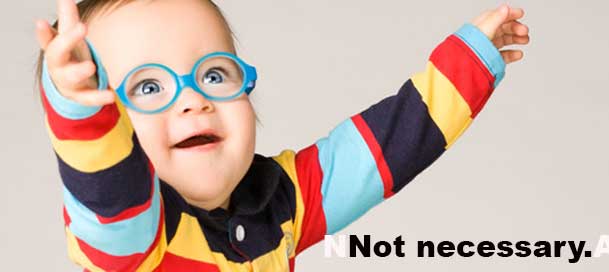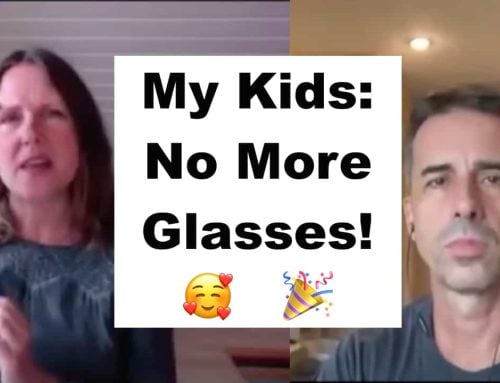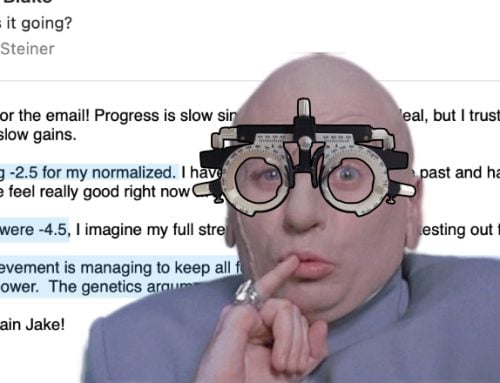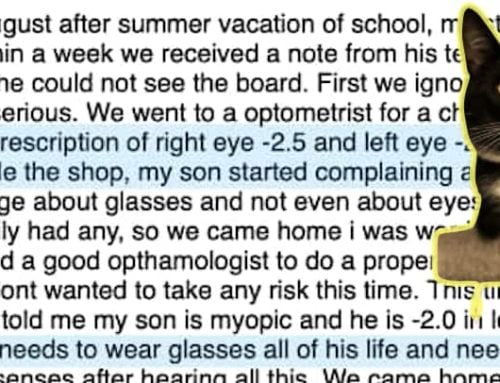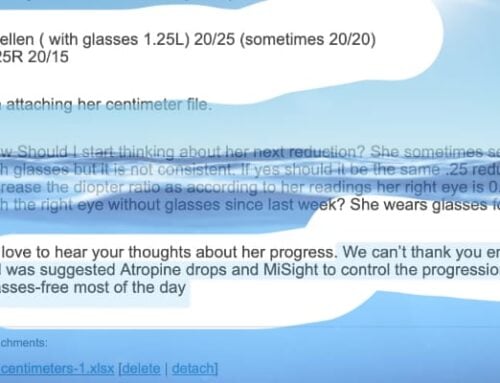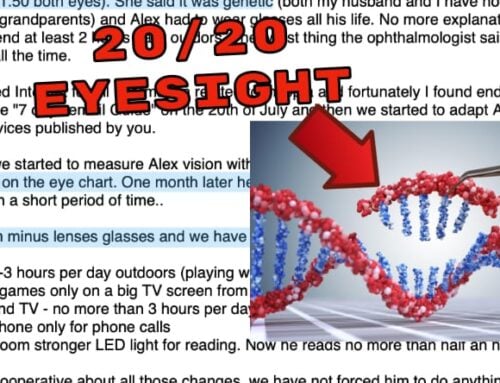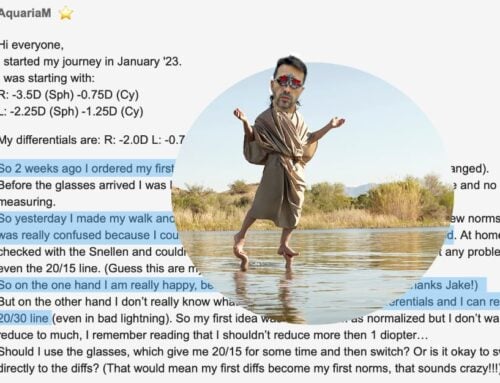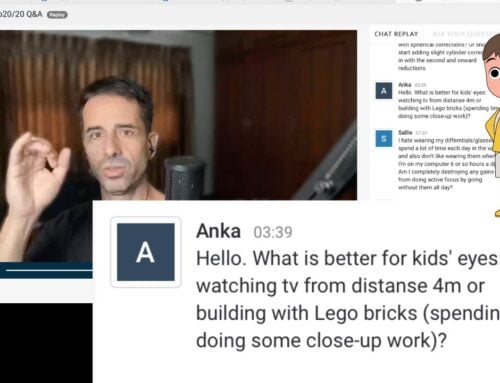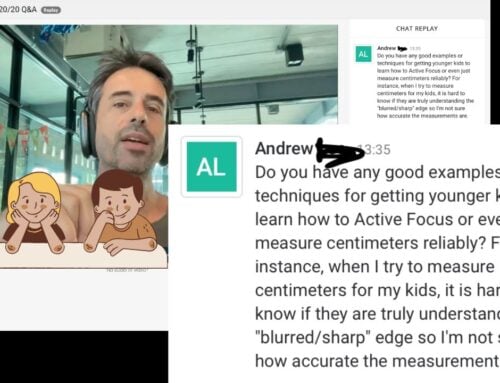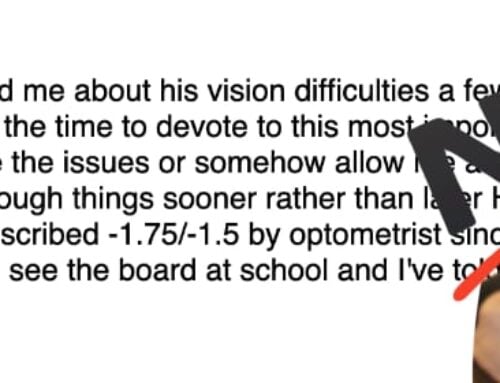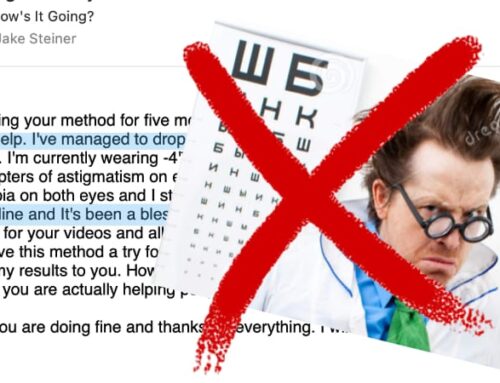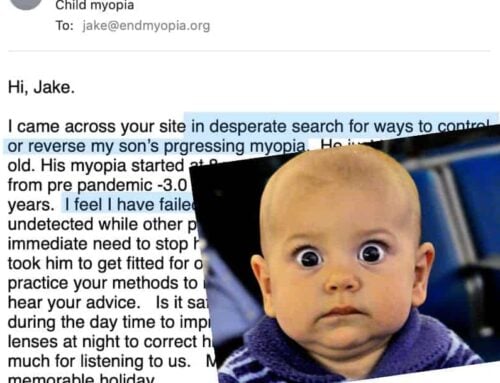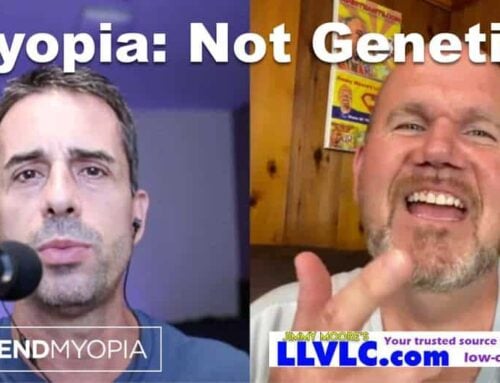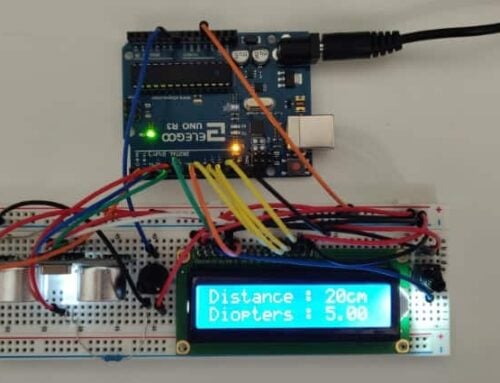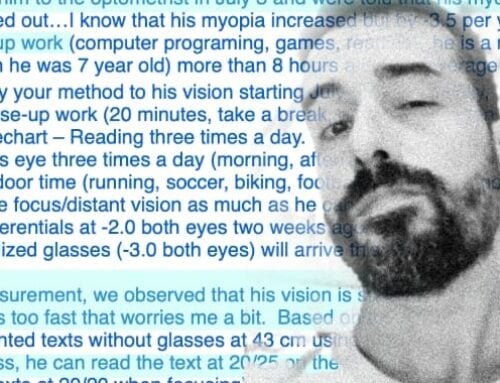Today is busier than usual, and I hadn’t planned on taking time for a new article here in the blog.
But then while answering forum questions, something came up that I want to share with you, before it gets lost in the to-do list of the day. This topic, a short comment about child myopia prescriptions:
There is an interesting round of posts by Aparna in the forum, about Kedar, her young son and his myopia:
Nov 2012 (optometrist): -4.5 RE -4.75 LE
Summer 2013 (optometrist): -4.25RE -4.5 LE
Oct 2013 (at school nurse’s office): 20/70 with naked eyes (bright light on snellen with overhead lights on)
Original post is here. The optometrist, back in November of 2012, prescribes a -4.5 lens to a seven year old boy.
While at this point in my life just about nothing can surprise me, as far as doctors prescribing small children, this is still just painful to read about.
At this young age, with that prescription, the child has almost no chance of having any type of usable vision by the time he reaches his teens. Legal blindness is just about a guarantee, for the remainder of his life. Heavy dependency on prescriptions, likely eventually being sold on laser surgery, ongoing increasing risk for retinal detachment later in life. That is the path. It’s tragic, considering how it is entirely preventable.
And for those who are skeptical (which is entirely to be expected, considering the one sided nature of vision health debate in the mainstream), let’s look at some more facts, posted by Aparna more recently:
![]() Yesterday, with -2.5( with astigmatism correction) he was still at 20/50 at the end of the day. He also did a reading without any glasses, and he was able to read 20/200 only. The snellen is placed under a bright tubelight, but the room at the end of 20 feet is on the darker side.
Yesterday, with -2.5( with astigmatism correction) he was still at 20/50 at the end of the day. He also did a reading without any glasses, and he was able to read 20/200 only. The snellen is placed under a bright tubelight, but the room at the end of 20 feet is on the darker side.
However in evening shade he was able to read 20/30 (he says blurred but can make out the letters). 20/40 is also blurred but more clearer than 20/30.
During a sunny day, he could read 20/25 with his -2.5.
The whole post, from January 2014, is here.
Just take a look at those figures, and the prescription, and tell me how there is any possible room to misinterpret what I continue to advocate, here on the site:
- Overprescription is rampant and unchecked.
- Children are prescribed heavily, without consideration of long term eye health
- Eyesight is highly variable
- Improvement is obviously within reach
Obvious, yes?
Kedar can now see 20/25, with a 45% lower prescription than stated by the optometrist.
20/25 passes a driving test. That is half the prescription strength, plenty for the government to consider an individual safe on the road (for reference, obviously Kedar isn’t about to get his license). What other medications are we prescribed, at double of the necessary dose? Mediation that has long term negative consequences on our health?
Granted, 20/25 in ideal conditions. I am pushing the envelope, to make the most of this point.
You can stop a child’s progression of myopia, by reducing these huge overprescriptions. Reducing eye strain, really taking care about distance (children like to get very, very close to screens and pages), never wearing minus up-close (especially for intitial myopia, low prescriptions).
Click the image above, or look at the lots of articles on the subject here, and here.
I have a lot written on the topic of child myopia. Getting the child engaged, making sure that corrective steps are not viewed by the child as punishment, making vision improvement a game. Staying away from optometrists, who are quite simply looking at one moment in time, and a result printed on a piece of paper. Instead, going to see a behavioral ophthalmologist, or better yet, taking the few days to learn how to measure your child’s myopia at home. It is easy, and it works just as well as the optometrist office.
And unlike adults, who tend to be in a rush to improve, we can be patient – since even the smallest improvement has a compound positive effect.
Imagine if Kedar, now being seven years old, just improves by 0.25 diopters every year. By the time he gets a drivers license, he will be able to pass the vision test without glasses. Pretty good, yes?
Conversely, if Kedar gets a -4.5 at age 7, the statistical odds are that his myopia will progress by about 0.75 diopters per year. By the time he gets a drivers license … yes, he will still be legally blind, and have a rather significant prescription requirement to see the road at all.
Truth be told, children tend to improve quite slowly at a young age, since it is difficult to get enough positive stimulus from them. But once the interest builds, a child can improve well into the range of a full diopter every six months. That is a much faster progression than in my above example, and more realistic for early teens and older.
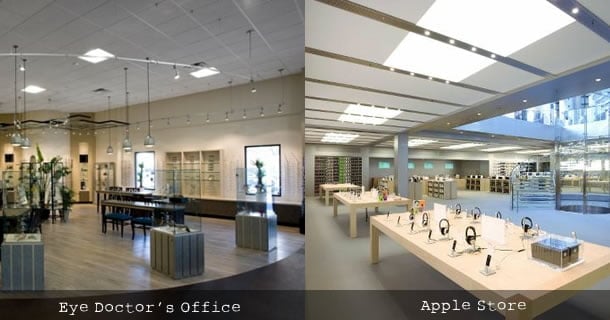 Mainstream ideas about eyesight health (click image for the article).
Mainstream ideas about eyesight health (click image for the article).
Of course the problem with all child myopia, is lacking dialog. All you get is the sales centers masqueraded as doctors offices, mainstream unawareness of rehabilitation, and countless Internet scams promising the moon.
All that, vs. this one little Website. And even a small increase in traffic results in so much e-mail, that your old friend Alex just can’t keep up.
I don’t know the answer for fixing the matter of educating more of us about the realities of myopia, and prevention. All I can say for sure, is that you can and should take care of your child’s eyesight!
Enjoy,

